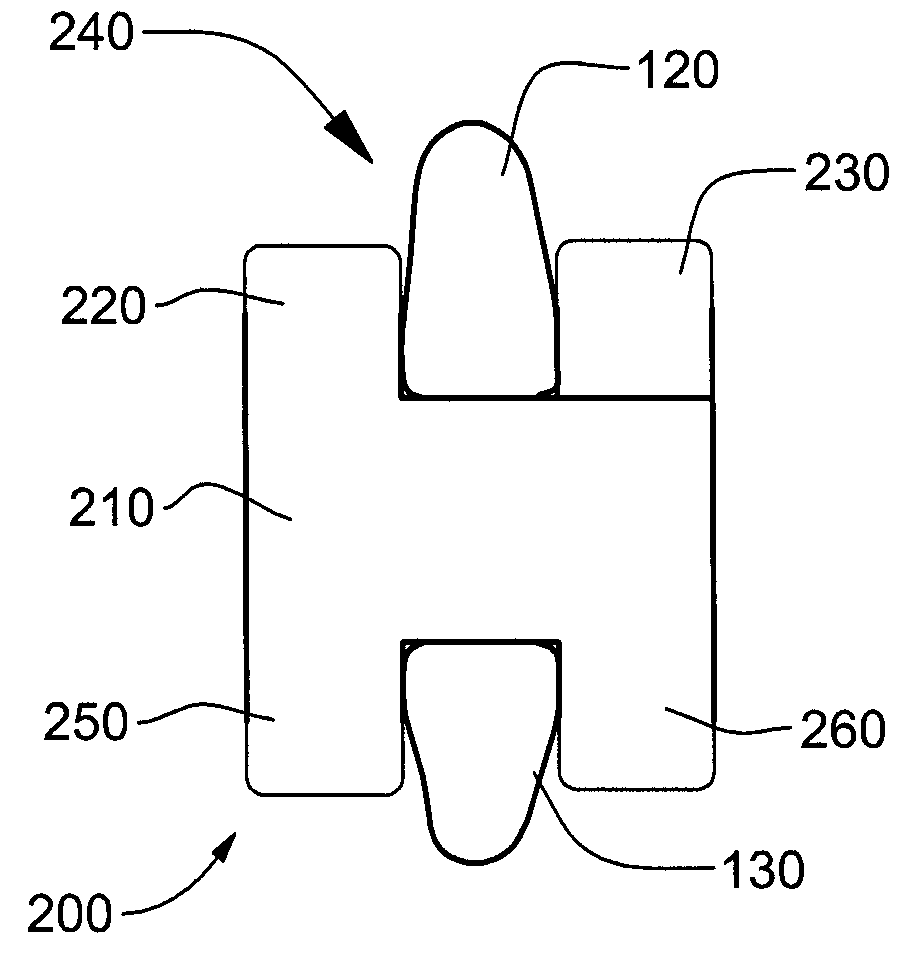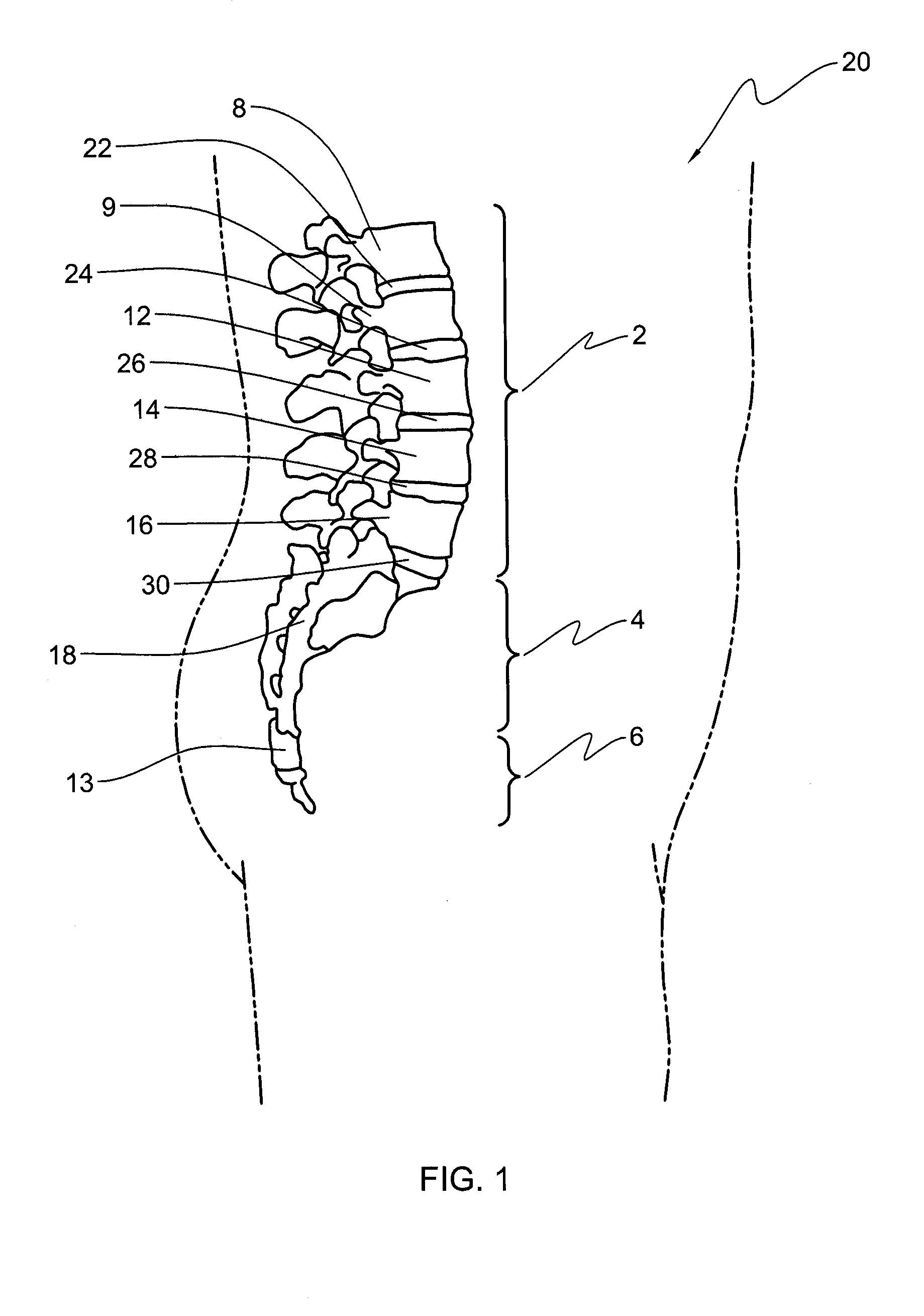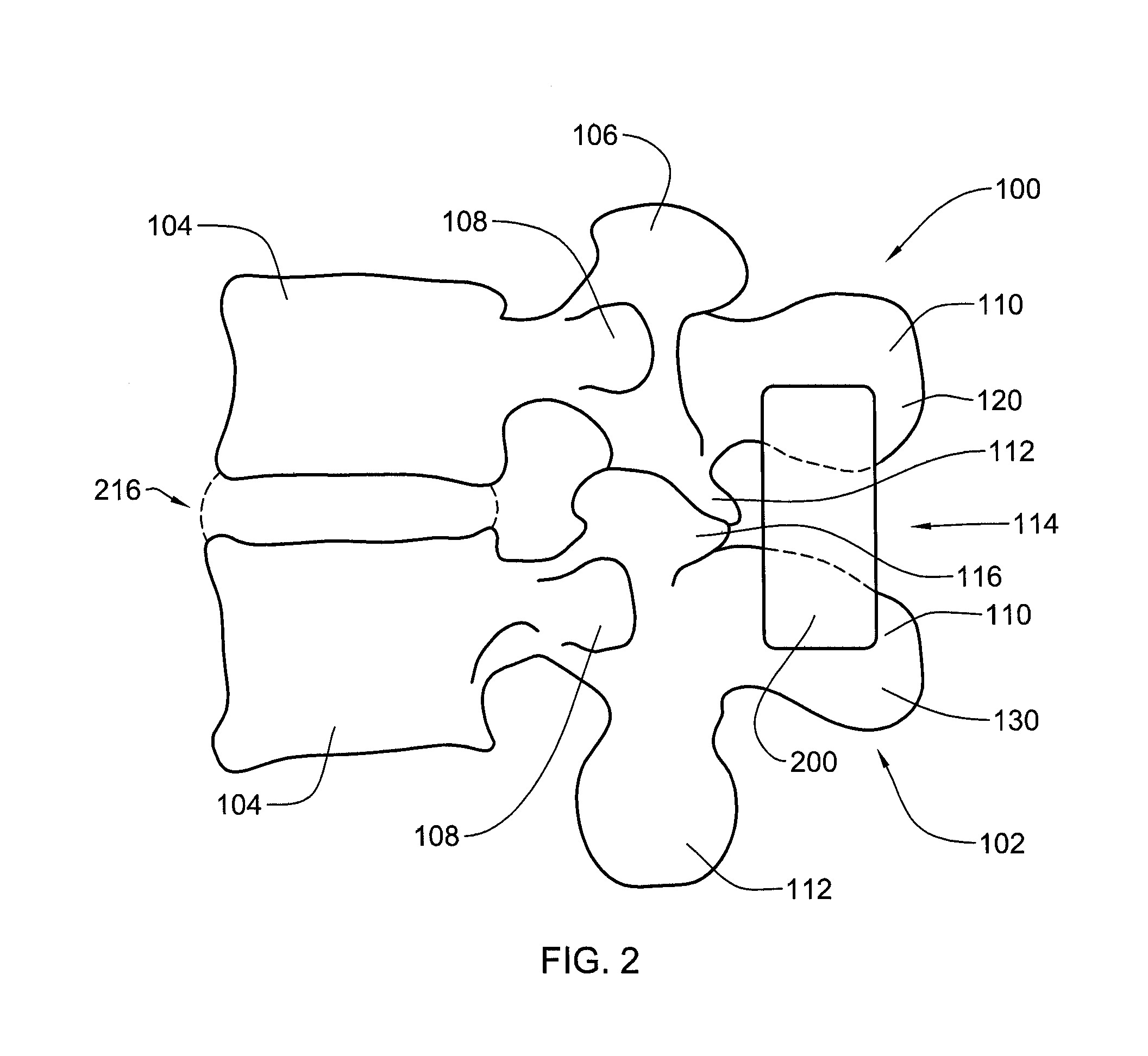Spinal implant system
a technology of spinal implants and implants, applied in the field of spinal implants, can solve the problems and achieve the effect of substantially non-flexible first forks
- Summary
- Abstract
- Description
- Claims
- Application Information
AI Technical Summary
Benefits of technology
Problems solved by technology
Method used
Image
Examples
Embodiment Construction
[0062]In accordance with the principles of the present invention, spinal implant systems and methods for inserting spinal implants are provided. The implants described herein avoid some or all of the cuts to a supraspinous ligament of a patient by allowing the implants to be inserted from a side of the patient's spine, interspinous space and supraspinous ligament when the implant is configured in a non-use position. The in-situ implant may then be manipulated to an in-use position by a surgeon from the same side as the insertion of the implant without damaging the supraspinous ligament. For example, the implant may be inserted, and manipulated, from a side of a mid-line of a patient's spine when viewed from a posterior thereof.
[0063]Referring to FIG. 1, a portion of a spinal column 20 is shown. As depicted, spinal column 20 includes a lumbar region 2, a sacral region 4, and a coccygeal region 6. As is known in the art, column 20 also includes a cervical region and a thoracic region....
PUM
 Login to View More
Login to View More Abstract
Description
Claims
Application Information
 Login to View More
Login to View More - R&D Engineer
- R&D Manager
- IP Professional
- Industry Leading Data Capabilities
- Powerful AI technology
- Patent DNA Extraction
Browse by: Latest US Patents, China's latest patents, Technical Efficacy Thesaurus, Application Domain, Technology Topic, Popular Technical Reports.
© 2024 PatSnap. All rights reserved.Legal|Privacy policy|Modern Slavery Act Transparency Statement|Sitemap|About US| Contact US: help@patsnap.com










